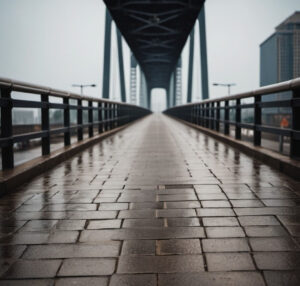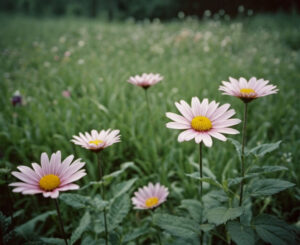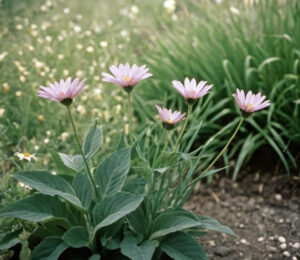Color plays a pivotal role in photography, affecting the mood, composition, and overall impact of an image. By understanding color theory, you can enhance your photos with harmonious tones that captivate and engage viewers. Let’s explore the basics of color theory and how to apply it to your photography.
1. The Basics of Color Theory
Color theory is the study of how colors interact and complement each other. The color wheel, which organizes colors in a circular layout, is a fundamental tool in color theory. It includes primary colors (red, blue, yellow), secondary colors (green, orange, purple), and tertiary colors (combinations of primary and secondary colors).
- Primary Colors: Red, blue, and yellow are the foundation of all other colors.
- Secondary Colors: Green, orange, and purple are created by mixing primary colors.
- Tertiary Colors: Colors like red-orange, blue-green, and yellow-green are formed by mixing primary and secondary colors.
2. Color Harmony
Color harmony refers to the pleasing arrangement of colors. Using harmonious color schemes can make your photos more visually appealing. Here are some common color schemes:
- Complementary Colors: Colors opposite each other on the color wheel (e.g., red and green, blue and orange) create a high-contrast, vibrant look. Use complementary colors to make elements in your photos stand out.
- Analogous Colors: Colors next to each other on the color wheel (e.g., blue, blue-green, and green) create a cohesive, serene look. Analogous color schemes are ideal for creating a harmonious and balanced image.
- Triadic Colors: Three colors evenly spaced around the color wheel (e.g., red, yellow, and blue) offer a vibrant yet balanced look. Triadic schemes are great for adding variety while maintaining harmony.
- Monochromatic Colors: Variations of a single color (e.g., different shades of blue) create a unified and soothing effect. Monochromatic schemes are perfect for minimalist compositions.
3. Using Color to Set the Mood
Colors evoke emotions and can dramatically influence the mood of your photographs:
- Warm Colors: Red, orange, and yellow are warm colors that convey energy, passion, and warmth. Use warm colors to create a sense of excitement or to draw attention to a specific part of your image.
- Cool Colors: Blue, green, and purple are cool colors that evoke calmness, tranquility, and sadness. Cool colors can be used to create a peaceful, reflective atmosphere.
- Neutral Colors: White, black, gray, and brown are neutral colors that provide balance and grounding. Neutral tones can complement other colors and help to emphasize the main subject.
4. Color in Composition
Incorporating color theory into your composition can enhance the visual impact of your photos:
- Leading Lines and Shapes: Use colors to guide the viewer’s eye through the image. Leading lines in contrasting colors can draw attention to the focal point.
- Balance and Proportion: Balance the use of colors to create a harmonious composition. Avoid overwhelming the viewer with too many contrasting colors; instead, use color to highlight the subject.
- Foreground and Background: Utilize color contrast to separate the subject from the background. A vibrant subject against a muted background (or vice versa) can make the subject pop.
5. Post-Processing for Color Enhancement
Post-processing allows you to fine-tune the colors in your photos:
- Adjust White Balance: Ensure accurate color representation by adjusting the white balance. Correcting color temperature can remove unwanted color casts and enhance the natural tones.
- Use HSL Adjustments: The Hue, Saturation, and Luminance (HSL) panel in editing software like Adobe Lightroom lets you precisely control individual colors. Adjusting these settings can help you achieve the desired mood and harmony.
- Apply Color Grading: Color grading techniques can subtly shift the color palette to enhance the overall look and feel of your images. Experiment with split toning and color grading to create a cohesive aesthetic.
By understanding and applying color theory, you can enhance your photography with harmonious tones that elevate the visual appeal and emotional impact of your images. Experiment with different color schemes and observe how they transform your photos, making them more compelling and memorable.
 Leading lines are a powerful compositional tool in photography that can transform an ordinary image into an extraordinary one. These lines guide the viewer’s eye through the photograph, creating a sense of direction, movement, and depth. By effectively utilizing leading lines, photographers can enhance their compositions and draw attention to the main subject of the image.
Leading lines are a powerful compositional tool in photography that can transform an ordinary image into an extraordinary one. These lines guide the viewer’s eye through the photograph, creating a sense of direction, movement, and depth. By effectively utilizing leading lines, photographers can enhance their compositions and draw attention to the main subject of the image. Depth of field (DOF) is a fundamental concept in photography that can dramatically impact the look and feel of an image. It refers to the zone of acceptable sharpness within a photo, extending in front of and behind the main subject. Understanding how to control depth of field allows photographers to emphasize certain parts of their scene, adding depth and dimension to their work.
Depth of field (DOF) is a fundamental concept in photography that can dramatically impact the look and feel of an image. It refers to the zone of acceptable sharpness within a photo, extending in front of and behind the main subject. Understanding how to control depth of field allows photographers to emphasize certain parts of their scene, adding depth and dimension to their work. Photography is an art form that relies heavily on composition to create visually appealing images. One such compositional technique is the Rule of Odds. This principle is rooted in the idea that images are more engaging when they contain an odd number of subjects. But why does this rule work so effectively?
Photography is an art form that relies heavily on composition to create visually appealing images. One such compositional technique is the Rule of Odds. This principle is rooted in the idea that images are more engaging when they contain an odd number of subjects. But why does this rule work so effectively?

